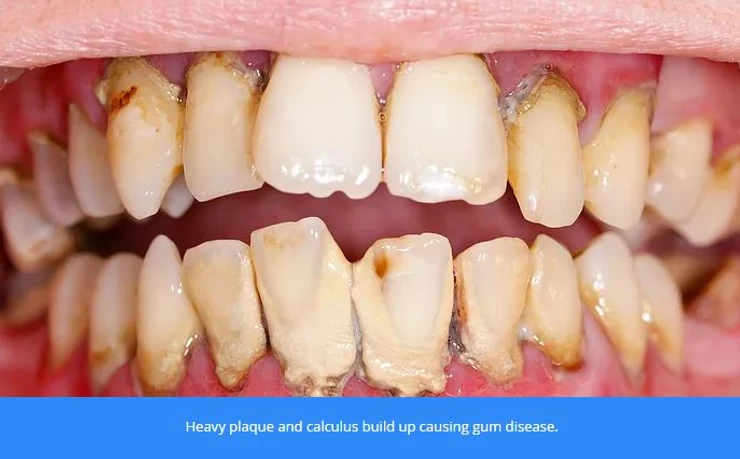Gum disease is a slow and often painless process which can lead to tooth loss. Inflammation of your gums will occur if plaque is not removed regularly from along the gum line. Plaque that is not removed on a daily basis will set hard turning it into tartar also known as calculus and cannot be removed with your toothbrush.
Your gums don’t like the bacteria living in plaque and calculus therefore inflammation occurs. This inflammation of the gums is referred to as gingivitis. Over time if calculus is not removed it builds up and causes your gums to become detached from the tooth. Not only will your gums recede, so does the supporting bone. As this cycle progresses you will notice your teeth looking longer and they will also become loose. This is now referred to as periodontitis. At this stage, the damage cannot be reversed
but it can be controlled.

Symptoms of gum disease include:
- Bad Breath that won’t go away
- Red or swollen gums
- Bleeding or tender gums
- Sensitive teeth
- Teeth appearing longer from gum recession
If you notice any of the above symptoms you should see your dentist to catch this disease in the early stages.
Unhealthy gums will bleed until they have healed. To improve the health of your gums you will need to have your teeth cleaned professionally, then maintain a strict oral hygiene routine at home.

Daily oral hygiene home care instructions
Brushing
- Brush your teeth twice a day using a soft bristled toothbrush and a pea-sized amount toothpaste that contains fluoride
- Always brush systematically so you thoroughly clean all surfaces of your teeth
- Hold the brush at a 45° angle towards the gum line and use a gentle circular motion to brush the outside and inside surfaces of each tooth.
- Use back and forth strokes on the chewing surfaces.
- Use the tip of the brush to brush behind your front teeth, both top and bottom using a flicking motion.
- Brush your tongue from back to front to remove odour-producing bacteria.
- Finish with a spit, not a rinse.
Flossing
- Starting with about 45 cm of floss, wind most of the floss around each middle finger, leaving about 2cm of floss to work with.
- Holding the floss tautly between your thumbs and index fingers, insert the floss gently between your teeth using a back and forth motion to avoid traumatising the gums.
- Gently curve the floss around the base of each tooth, making sure you go gently beneath the gum line. Move the floss up and down to gently scrap the side surface of each tooth.
- To remove the floss, use the same back-and-forth motion to bring the floss up through the contact point of your teeth.
- Use clean sections of floss as you move from tooth to tooth.
- Remember to clean the back surface on your rear molars.







